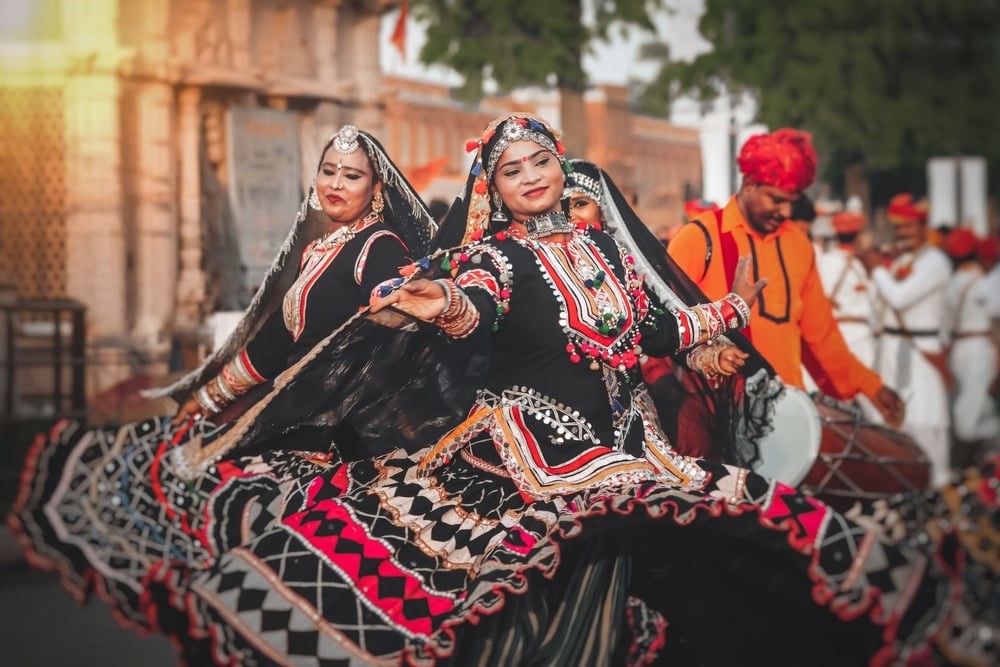Description

Disclaimer: Copyright infringement not intended.
Context
- The Kalbelia community, also known as the "Snake Charmers," is a nomadic tribe residing in the Thar Desert in Rajasthan, India.
- Their cultural practices, including their unique dance form, music, and traditions, form an integral part of their identity.
Details
Legend
- Sage Kanifnath was offered a bowl (belia) of poison (kaal or death) by his spiritual mentor Gorakhnath.
- When he drank it to the last drop, Gorakhnath blessed Kanifnath with the ability to ingest poison and handle venomous creatures.
- And so, Kanifnath’s followers from around the Thar desert in Rajasthan came to be known as Kalbeliyas.
- They venerated snakes and made a living as snake-charmers.
- Divided into two primary groups, Daliwal and Mewara, the Kalbelias traditionally roamed and practiced snake handling and snake venom trading.
- Often called to rescue snakes from domestic settlements, they also caught them in the wild, and earned a livelihood showcasing their ability wherever they roamed as a nomadic tribe.
- Over time, they diversified their livelihoods, engaging in agriculture, cattle rearing, and the arts.
- Living nomadically in makeshift camps known as "deras," the Kalbelias have a deep understanding of local flora, fauna, and herbal remedies.
.jpg)
Cultural Significance
Dance and Music:
- The Kalbeliya dance, also called the Sapera dance, is a captivating and rhythmic art form.
- Women, adorned in vibrant traditional attire, perform this dance that mimics snake movements.
- The dance involves intricate movements replicating a serpent's motion, accompanied by musical instruments like pungi, dufli, been, and rhythmic beats of khuralio and dholak.
- Instruments like the pungi, dholak, and khartal accompany the dance, creating a lively atmosphere.
- Recognized by UNESCO as Intangible Cultural Heritage in 2010.
Costumes and Attire:
- Women wear elaborate, colorful traditional attire symbolizing the scales of a snake.
- Their clothing is adorned with mirrors, embroidery, and vibrant patterns.
- Heavy jewelry, including necklaces, earrings, bangles, and anklets, complements their dance performances.
Challenges
- Legislation like the Wildlife Act of 1972 banned their traditional snake handling, leading them to transition to performing arts for income.
- The community's income sources, mainly from performances and tourism, are sporadic and season-specific, prompting them to engage in agriculture or cattle rearing.
Religious and Social Traditions
- The Kalbelias are predominantly Cultural Hindus, practicing snake worship, particularly honoring Nāga and Manasa, and celebrating Naga Panchami.
- Unique from mainstream Hindu practices, they have distinct marriage customs, bury their dead instead of cremation, and observe different religious traditions.
.jpg)
Conclusion
The Kalbeliya community's vibrant dance, music, and rich cultural practices continue to be an integral part of Rajasthan's cultural landscape. Despite challenges, efforts to preserve and celebrate their heritage remain ongoing, ensuring the legacy and significance of their traditions for generations to come.
|
PRACTICE QUESTION
Q. Discuss the cultural significance and evolution of the Kalbelia dance form in Rajasthan. (250 Words)
|
















